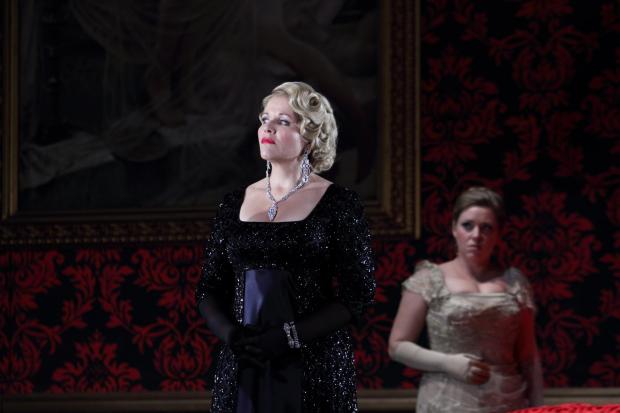Bengalis don’t tend to like Gandhi all that much. Feminists aren’t particularly on board with him either1. More than that, the current surge in Right-Wing, conservative Hindu nationalism in India has seen a rise in overt and systematic oppression of minorities. Anybody who is different – Muslim, queer, transgender, you name it – historically and presently they have all been scarred by discourses of Indian (read: Hindu) nationalism, and it’s very difficult to strike a balance between celebrating the freedom and independence of the country we love and reinforcing these essentially violent ways of thinking the Nation. In brief, as a Bengali Feminist whose work is dedicated to queer, intersectional feminist movements in India, I was extremely nervous about going to see an Opera about Gandhi. I left overwhelmed, and proud, both of my favourite art form and my heritage. This is not (thankfully, in my view) an opera glorifying Gandhi. It is an opera about an idea, about philosophy, and about the will to truth and social justice.
The focus of Glass’s work is on the message of satyagraha, a sanskritic term Gandhi coined to describe his ideology of ‘non-violent’ resistance to the oppressions of the colonial Raj. The costuming was sensitive, both honouring Indian tradition and resisting the temptation to essentialise and exoticise the Indian subjects. I particularly appreciated the imaginative and powerful representation of Krishna, with long dark hair in a blue suit, marked on his forehead but entirely focussed on delivering his message, undistracted by temptingly glamorous peacock feathers, gold and conches that are usually part of his symbolism, at least in India religious art. The set and production design reflected and augmented Glass’s music, without stereotyping either India’s history or present reality, as is more often than not seen in representations of one of the west’s favourite oriental subjects.

Phelim McDermott (director) has an unfathomable gift for translating the abstract auditory to the (sometimes no less abstract) visual. I can never forget the stunning juggling work in his production of Glass’s Akhnaten, which mirrored and enhanced that work’s rhythmic drive. Here was a different approach entirely. There was such confidence in the stillness and slowness of the blocking, allowing the music and core ideas of the work just to be, without requiring the actors to move for the sake of movement. Newspapers featured throughout as a design motif, used in many ways as props, projection backgrounds and puppets, reflecting both the motivic nature of the music and acknowledging the huge historical and political significance of newspapers in the Indian Independence movement2.
Perhaps most astounding were the enormous puppets that rose up throughout the work. Filling the entire width and height of the Coliseum’s stage, crocodiles, cows and battling Pandavas appeared almost inexplicably out of baskets, brooms and papier maché (more newspaper), dramatising background themes but also putting me to mind of the Indian folk tradition of travelling puppet theatre. The fantastical foe to Arjuna in act one was instantly recognisable to my inner Indian child, evoking and reimagining Indian artistic representations of demons that are both physical and ideological. I gasped when the likeness of Rabindranath Tagore appeared on stage. It was moving and terrifying, seeing such a major cultural and identity icon seemingly incarnated before me.

Satyagraha stirred me as an opera-lover and as an Indian. This is unfortunately almost never my experience of operatic representations of Indianness, be that culture, clothing or romance. In fact usually I find myself stifling feelings of offence. This sensitive and honest production has much to be proud for, with cultural sensitivity being up there with its artistic excellence.
Satyagraha does not feel the need to explain itself too much. It is a viscerally meditative experience, an opportunity to be overwhelmed by the music, the visuals, but most of all by an idea, rather than a structured narrative. Thank you, Glass, Improbable, ENO. I can’t wait for Einstein on the Beach.
1 Here’s a good introductory summary why. https://www.theguardian.com/commentisfree/2010/jan/27/mohandas-gandhi-women-india
2 Cf http://www.thehansindia.com/posts/index/2015-03-12/Role-of-the-press-in-freedom-struggle-136832
https://www.slideshare.net/Amaljithravi/role-of-newspaper-in-indian-freedom-movement
3 Featured Image Source: GScene.com




























